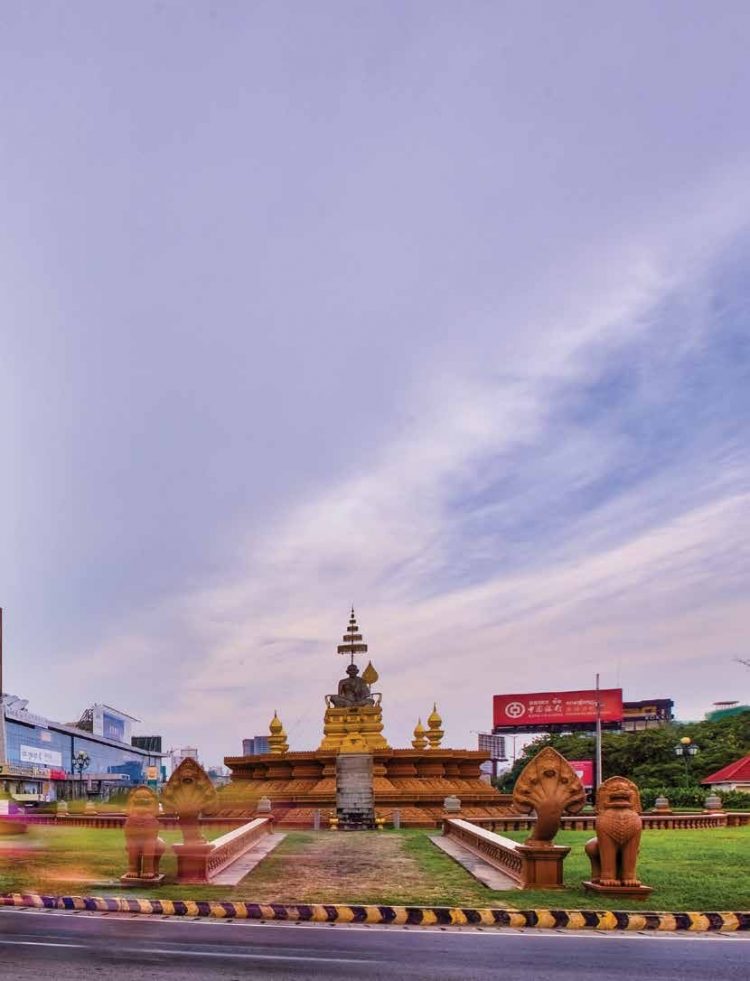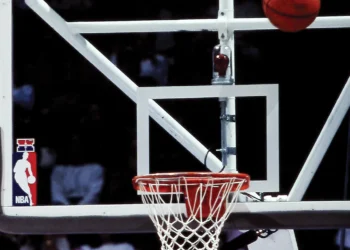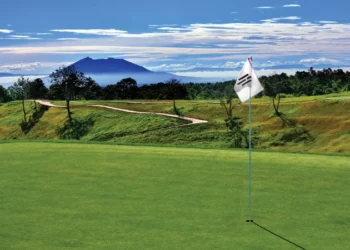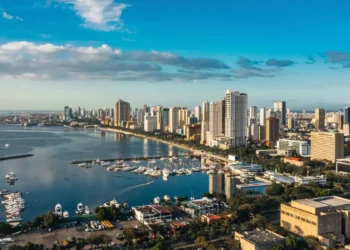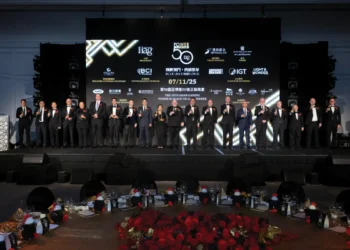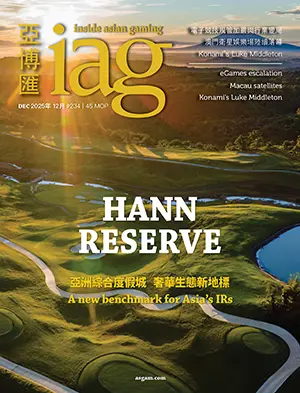NagaWorld’s expansion lifts the Mekong region’s largest integrated resort and Phnom Penh into the top tier of regional destinations, with an increasing focus on Chinese tourists.
When I first visited NagaWorld six years ago, the casino hotel overlooking the Mekong River in Cambodia’s capital proved a pleasant surprise. From its Pan-Asian breakfast buffet to themed gaming areas to the spa with a jacuzzi in every treatment room and signature four-hand massage, NagaWorld exceeded expectations and demonstrated the business smarts that made parent company NagaCorp one of the top performers on the Hong Kong stock market since its 2006 IPO as the exchange’s first casino listing.
Everything about NagaWorld seemed eminently practical and cleverly considered – everything except the company’s plan for a “Naga2” across the street, linked to the original via an underground shopping mall. NagaWorld’s then-Managing Director for Casino Operations and Property Mike Ngai described two towers, one with guest rooms for mass market customers and the other for VIPs, featuring in-room gaming, plus a theater seating thousands, hundreds more tables and thousands more machines. The plan brought to mind the underwater casino plan for Macau’s City of Dreams: a wonderfully appealing impossible dream. Fast forward to 3 November 2017 and the soft opening of Naga2 revealed everything Ngai, now the company’s Chief Marketing Officer for Southeast and East Asia, described and more, all in a compelling Paul Steelman designed package with a construction cost of US$392 million. That’s truly fantastic.
Naga2 lifts the only casino in booming Phnom Penh into the top rank of regional gaming destinations. The gleaming gold twin towers of Naga2 substantially raise the ante for a company that has kept its focus on the Southeast Asian mass market, largely escaping the 2014-16 downturn that devastated Macau and fellow ASEAN (Association of Southeast Asian Nations) member Singapore. Naga2 also enables management to play for a greater share of growing Chinese outbound tourism, forecast to reach 200 million travellers by 2020. China has supplanted neighboring Vietnam as Cambodia’s largest visitor source, growing 44% to 700,000 in the first eight months of 2017.
“We’ve just built a foundation from mass market tourism and I think our Chinese visitors in particular will continue to grow and enjoy our new property,” NagaCorp Chairman Timothy McNally says.
In its 22 years, starting on a barge on a branch of the Mekong River, Naga has upped its game incrementally. It came ashore with a few dozen gaming tables and couple of hundred slot machines in 2003. In 2006, its Hong Kong IPO – the first international stock listing for a principally Cambodian enterprise – raised US$95 million to add hotel rooms. A decade of measured steps built business capacity and credibility – NagaRock and Saigon Palace themed gaming floors; a live dealer multigame area and, when that proved successful, a second node; a second hotel wing targeting the mass market; outreach to Macau junkets; more VIP rooms and guest suites sufficiently stylish to rival any in the region.
“The idea is to position a first world product in a third world market,” NagaCorp CEO, founder and majority shareholder Chen Lip Keong told a media briefing ahead of the Naga2 opening. “That is a competitive edge.”
NagaCorp’s revenue has grown from US$150.5 million in 2010 to US$531.6 million in 2016 and US$401.6 million in the first half of 2017. EBITDA rose from US$61.9 million in 2010 to US$256.1 million in 2016 and US$181 million in the first half of 2017. Building from that base, Naga has taken a great leap forward.
DOUBLE UP
Officially soft-opened on 3 November, Naga2 more than doubles the size of the NagaWorld complex. Completing its outfitting in the coming months, the two new towers add at least 300 gaming tables and 2,500 slot machines across four main gaming levels and multiple VIP areas. The full complex is expected to reach 600 tables and more than 5,000 machines, some still operated via third party partnerships that include placement fees and revenue share for NagaCorp.
Naga2 gaming areas extend the casino cell concept with varied design, food and music choices. They also continue the Macau level table minimums – US$100 for baccarat “squeeze games” that allow bettors to handle their cards, US$40 minimums for baccarat with cards dealt face up. There are sic bo and roulette tables, but card games dominate, principally blackjack, poker variants – Naga1 has a pair of Texas hold’em tables – plus Vietnamese favorites Bai Buu and Ngau Ham.
The new towers add 900 guest rooms, bringing NagaWorld’s total to 1,700. Naga2 features an elegant multipurpose Broadway style theater with 2,200 seats and full state of the art visual projection capabilities, suitable for MICE applications, concerts and international touring companies. NagaCity Walk, the underground shopping area linking the two sides of the complex, has 3,800 square meters (41,000 square feet) of retail space, nearly 15 times more shopping than Naga1, across two dozen storefronts ranging from local products to international fashions, much of it duty-free and new to Cambodia.
Naga means dragon in many Asian languages but also connotes gold in some Chinese dialects, so gold and Khmer themes dominate public areas, with VIP rooms sporting lotus, butterfly and other motifs. New dining and drinking options include opulent Cantonese Hall of Golden Chimes, a noodle bar, 2Pangaea with Indochina’s longest buffet, a food court at Naga2’s entrance from NagaCity Walk and bars in many gaming areas. Almost every food outlet has adjacent slot machines: Paul Steelman says slots overlooking dining garner higher revenue.
TAKING ADVANTAGE
Naga2 illustrates how the company effectively leverages its competitive advantages – and sometimes creates them. NagaCorp holds a 70-year gaming license, including an exclusive for Phnom Penh until 2035. Naga hasn’t abused the privilege to build multiple casinos, Chairman McNally points out. Instead, along with corporate support for the nation’s rebuilding to overcome the Khmer Rouge legacy of destruction, Naga has forged a partnership with the government to boost tourism, financially supporting Cambodian tourism offices in China and leasing three Airbus A320s for Bassaka Air, an international airline based in Phnom Penh.
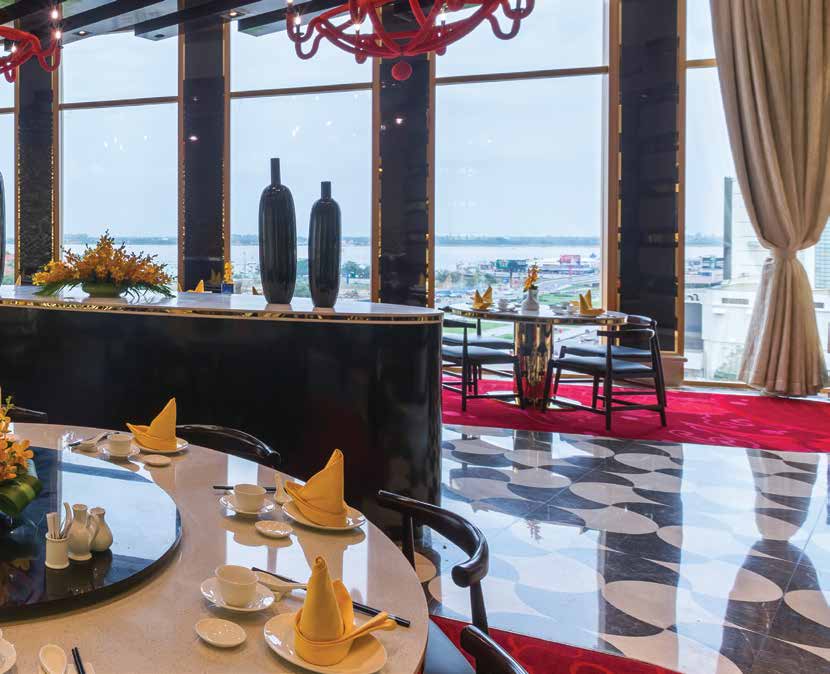
The Hall of Golden Chimes Chinese Restaurant
Cambodia’s relatively low costs, along with Naga’s careful eye on capital expenditures, held construction costs for Naga2 and NagaCity Walk to US$392 million, plus perhaps half as much again for outfitting it. NagaCorp reports it’s spent a total of US$1.5 billion on the NagaWorld complex and that commercial real estate specialist Colliers International has valued it at US$5.1 billion.
Low costs extend to labor and taxes in the single digits; the latter may change with pending gaming legislation that Naga says it wholeheartedly supports. Low overhead enables Naga to offer junket commission and revenue share deals that are at the top end of the market, as well as boosting NagaCorp’s bottom line. On the other hand, Naga executives believe Cambodia’s real and perceived lack of regulatory rigor has resulted in penalties from investors and bankers – exorbitant bank interest rate demands led Dr Chen to personally finance Naga2 via a convertible bond arrangement; he took payment in shares last August – and added costs of self-regulation, such as its biannual independent audits for compliance with international antimoney laundering standards.
The overwhelming bulk of Naga2 rooms are in the hotel tower, but the VIP tower may become NagaWorld’s signature. The VIP tower features nine floors of suites, four per floor. Two suites per floor include their own gaming room with a table, and the wall between those gaming areas can be removed. Naga says it will encourage VIPs to occupy entire floors.
MOVING UP
The VIP tower culminates a typically measured effort that began in March 2013 to expand high roller play using junkets. “We were able to increase table limits, bringing a little bit higher quality players though revenue share agreements where they received a percentage of the win but they also were responsible for some of the loss,” McNally explains. “That gave us a managed risk approach.”
In 2012, as a self-proclaimed “low-end VIP destination,” NagaWorld reported VIP roll of US$3.8 billion and VIP revenue of US$94.5 million. That represented 34% of total revenue and 17% of gross profits. After four years of enhanced incentives and upgraded facilities, the 2016 figures were US$8.7 billion in roll and US$225.7 million in revenue, representing 42% of total revenue and 19% of gross profits. For the first half of 2017, in a rising regional VIP market, roll rose 71% over the first half of 2016 to US$7.8 billion and revenue rose 89% to US$210.5 million, growing to 52% of revenue and 23% of profits. VIP growth slackened to 58% in the third quarter, according to Union Gaming, probably because some high rollers deferred trips awaiting Naga2.
Even before the formal soft opening, high roller action was brisk in open suites and other new VIP areas, though initial Macau junket promoter response has been mixed. “We have no major reaction towards the Naga2 opening and [continue] business as per normal, pending players patronage requests,” Suncity Group President for Marketing Strategy YM Choong says.
After visiting ahead of the Naga2 opening, Rich Goldman CEO Nicholas Niglio says, “They accommodate people the way they should be treated. It can be one of the top three places in the region outside Macau.” Niglio notes though that, “Our relationship is in the infant stage.”
Overall, Union Gaming co-founder Grant Govertsen, a longtime NagaCorp bull, expects upside to its second half revenue estimate of US$6.8 billion and its full 2017 EBITDA call of US$284 million. The boutique investment bank sees EBITDA of US$392 million in 2018 and US$429 million in 2019.
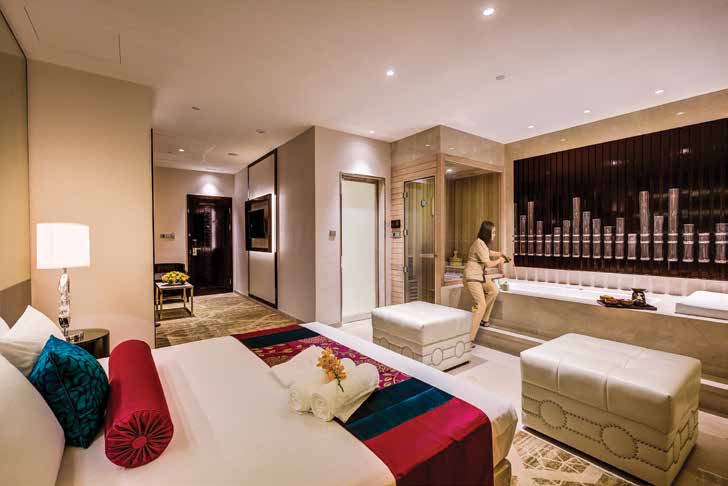
Naga2’s Elixir of Life Spa
“CHINA READY”
Much of the new growth will likely come from China.
“With that wave of consumerism coming from China, there’s a lot of energy and we are on the doorstep of China,” Dr Chen, a Malaysian trained as a physician who came to Cambodia in the early 1990s as part of Malaysia’s Prosper Thy Neighbor policy, says. “It’s a very exciting time with all of the FDI [foreign direct investment] and movement of people from China to here.”
Naga associate Bassaka Air facilitates that movement with three weekly flights each from Changsha, Xian, Hangzhou and Tsingtao, mainland China cities that have fewer direct international flight options than Beijing, Shanghai and Guangzhou. Bassaka also flies daily to Kuala Lumpur and twice weekly to Macau. Naga works with state-owned China International Travel Service to create tours for mainland travelers that include Phnom Penh and Siem Reap, site of the Angkor Wat temple complex, a 40 minute Bassaka Air flight from the capital. Naga also engaged CITS subsidiary China Duty Free Group as principal tenant and leasing agent for NagaCity Walk.
Those initiatives are part of making NagaWorld “China ready” with more Mandarin speaking staff and food options that appeal to mainland guests. Naga executives stress that they are aiming at tourists and not promoting gambling.
“We can develop our market and expand mass market, certainly China front and center, because we have cemented a very good relationship, we are very sensitive to issues of promotion of gaming in China and very much adhere to and strictly follow those guidelines when we deal with China – and we do that through the vehicle of tourism and building relationships,” McNally says.
Naga emphasizes it’s not abandoning its roots in ASEAN, a market of 650 million. Naga2 opened with a gala ASEAN themed ceremony and dinner attended by Cambodian ministers and regional diplomats, featuring entertainment by four ASEAN divas who earlier paraded through NagaCity Walk in a selfie and social media frenzy.
“We are in the heart of Indochina and by no means deviating from our mission statement of being the best entertainment destination in the Mekong region. Our focus will remain on the immediate area, particularly on the mass market,” McNally says.
But Naga, like the rest of the regional hospitality business, can’ ignore China. At the Naga2 briefing, Dr Chen revealed an ambition to curl Naga properties dragon-like around China. Next up, Naga’s casino under development in Vladivostok in Russia’s Far East. Dr Chen cited discussions with officials in Mongolia and Kazakhstan to build resorts there. Those resorts wouldn’t necessarily feature gambling – Dr Chen’s holdings in Malaysia include non-gaming Nexus Resort Karambunai in Borneo’s Sabah state – but would focus on Chinese travelers. And in Phnom Penh, executives say, they are already thinking about Naga3.






